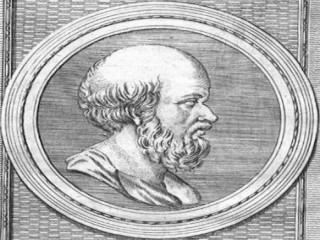
Eratosthenes Of Cyrene biography
Date of birth : -
Date of death : -
Birthplace : Cyrene, Ancient Greece
Nationality : Greek
Category : Historian personalities
Last modified : 2011-04-03
Credited as : Scholar of natural history, geographer, astronomer and poet, calculate the circumference of the earth
The Greek scholar of natural history Eratosthenes of Cyrene (ca. 284-ca. 205 B.C.) was proficient in many fields, but his most outstanding work was probably in mathematics and geography.
The Lexicon of Suidas (ca. 10th century A.D.) records the birth of Eratosthenes as the 126th Olympiad (276-272 B.C.), but since he was a pupil of Zeno (died 262-261) and since a number of authorities describe him as an old man of 80, it is more probable that he was born about 284 B.C. He studied grammar in Alexandria but was educated in philosophy in Athens, where he was influenced by the philosophers Arcesilaus and Ariston. About the age of 40 Eratosthenes was recalled to Alexandria by Ptolemy III to take charge eventually of the famous library of the Alexandrian Museum, succeeding Apollonius of Rhodes.
Eratosthenes wrote works of literary criticism (On Ancient Comedy), philosophy, history (establishing chronology as a scientific discipline), mathematics, astronomy, and geography. He also wrote a short epic dealing with the death of Hesiod, and Erigone, an elegy praised by Longinus. His Geographica comprises a history of geographical ideas, including a section on mathematical geography in which the division of the globe into zones was established and the inhabited portions were delimited. There were also some crude map-making attempts in his memoirs, and it is believed that Eratosthenes compiled a catalog of 675 stars.
Eratosthenes investigated arithmetical and geometrical problems. In his "sieve" method of distinguishing prime numbers, by which "the prime and incomposite numbers are separated by themselves as though by some instrument or sieve," there is the foundation for a logical theory of the infinite. The prime numbers were found by listing all odd numbers beginning with 3, then striking out every third number, every fifth number, and so on, with the remaining numbers being the primes. The much-attempted problem of the duplication of the cube, which dealt with the problem of finding the mean proportional between two lines, occupied Eratosthenes at an early date. To solve it, he constructed a bronze instrument called a mesolabe. He also applied geometrical methods, by ascertaining both the difference of latitude and the distance apart of two places that were supposedly located on the same meridian, to deduce the circumference of the earth. The size of the units of measure (stadia) that he employed is doubtful, but it is assumed that 10 stadia approximates 1 mile; he computed the circumference at 250,000 stadia, or 25,000 miles, very close to today's estimates.
The Alexandrian Age cultivated specialization, and Eratosthenes did not therefore win the approval of his contemporaries. He had achievements, however, which could not be denied, so he was called Beta (the second letter of the Greek alphabet), indicating that he was never "first-rate" at anything. During his last years he developed ophthalmia and became blind. The end came in Alexandria as the result of suicide by voluntary starvation.
















